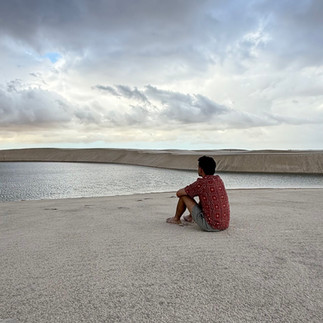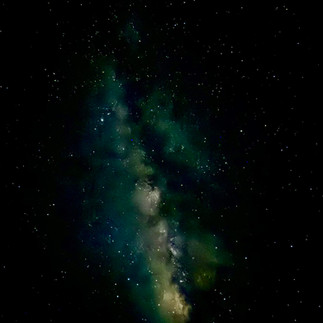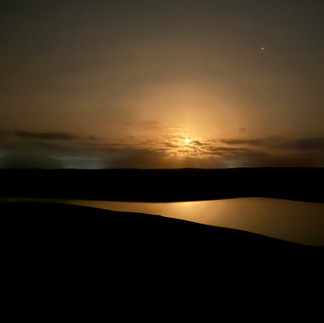
Northern Brazil - Where Rivers Meet Sand
- Larissa

- 16. Sept.
- 4 Min. Lesezeit
After the Guianas, we crossed into northern Brazil – and it felt a bit like homecoming. The warmth, the music, the food… and yes, the caipirinhas.
Compared to the south, the north feels like another Brazil altogether — freer, wilder, and full of a beauty that takes you by surprise.
Belém
Gateway to the Amazon
Our first stop was Belém, a city of more than two million, sitting at the mouth of the Amazon River. To put it in perspective: the state of Pará is almost three times the size of France.
Belém was once called “Nieuw Holland” when the Dutch briefly occupied the region in the 17th century (yes, we almost ended up speaking Dutch in Brazil). We wandered through the Mangal das Garças park, where I learned (to my horror) that iguanas also live in trees. New fear unlocked.

Of course, we couldn’t skip the Estação das Docas – old port warehouses transformed into a riverside promenade. Perfect for a cold beer while the sun dipped over the Amazon.
São Luís
Tiles & Reggae
From Belém we caught a brutal 2:30 a.m. flight to São Luís, capital of Maranhão. The city is known for its pastel-colored colonial houses covered in azulejos (tiles), and for being Brazil’s “reggae capital” – they call it Jamaica Brasileira.
It’s an intriguing fact that São Luís is the sole city in Brazil to have been established by the French. Later, the Portuguese took it over, but the French influence lingers in its name (after King Louis XIII).
Our stay was short, but unforgettable. São Luís has this mix of Portuguese history, Afro-Brazilian culture, and Caribbean rhythm that makes it feel unique even within Brazil. From here, the road led us to one of my absolute dreams.
Lençóis Maranhenses
A Dream Made of Sand & Water
Ever since I can remember, I’ve wanted to see Lençóis Maranhenses. And it was even more magical than I imagined – honestly, the most incredible place I’ve ever been.
The name means “bedsheets of Maranhão,” because from above, the dunes look like giant white sheets thrown over the land. What makes them extraordinary are the lagoons: during the rainy season, valleys between the dunes fill with rainwater, creating thousands of natural pools in every shade of blue and green.
And here’s the science bit: the dunes themselves were shaped by winds blowing sand inland from the Atlantic Ocean, piling it up over thousands of years until this surreal desert appeared – right in the middle of a tropical region that gets plenty of rain. Desert + lagoons = a landscape that shouldn’t even exist, but somehow does.
We hiked barefoot across the dunes – the sand warm but never burning – and swam in the crystal lagoons. At one point, we found a hidden one all to ourselves and named it Novo Zurich. Later we had lunch in a tiny family restaurant and napped in hammocks before heading back out for the sunset.
At night we returned again, walking under the Milky Way, counting shooting stars, and watching the moon rise above the dunes. It felt like a scene straight out of Interstellar. Alex even turned into Paul Atreides from Dune, carefully doing the sandworm walk across the ridges, as if to keep Shai-Hulud from noticing us.
And of course, this is where Avengers: Endgame filmed the scene where Thanos finds the Soul Stone. Pop culture meets pure magic.
Jericoacoara
Flow & Freedom
Next came Jericoacoara (locals say “Jeri”), a fishing village turned bohemian paradise, only accessible by sandy tracks.
Until the 1980s, Jeri had no roads, no electricity, no phones – just a remote fishing outpost hidden between dunes. Tourism arrived slowly, and even today, streetlights are banned to keep the night sky clear. That’s part of the magic: it still feels like a secret, even though the secret is out.
We stayed at Flow House Jeri, a pousada so new we were the very first guests. Instant upgrade included.
Days were simple and perfect: hammock naps, beach walks, shell collecting (delegated to the boys), beach clubs with “Keinemusik” beats, and endless caipirinhas. I also ate my weight in tapioca – chewy, filling, and now officially my comfort food.
At night we joined a samba party. Everyone around us knew every lyric, every move, like it was choreographed. And I asked myself: do Brazilians get some kind of national memo with all the songs and dances, and I just missed it?
Jericoacoara was also where our friend Alex said goodbye after three weeks of traveling with us. Kilian and I couldn’t resist – we extended our stay. Because some places deserve more than just a few days.
Looking Back
The north of Brazil will always hold a special place in my heart. Not because it was picture-perfect — but because it felt so alive, so different, so real. Belém with its Amazonian pulse, São Luís with its French tiles and reggae beats, the surreal dreamscape of Lençóis, and the lazy magic of Jeri, each place left its own mark on us.
But what really made this chapter unforgettable was sharing it with Alex. Watching him slip into his first pair of Havaianas, trying every new dish with curiosity, laughing with us at the little mishaps, and even bravely handling the uninvited “roommates” we discovered along the way. These weeks were lighter, warmer, and funnier because he was there. And that’s the kind of memory you carry long after the journey moves on.






















































































Kommentare